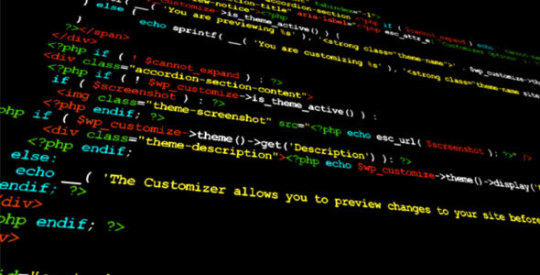Don't wanna be here? Send us removal request.
Text
Normal Expressions With JavaScript

advent
regular expressions (RegExp) are a very useful and powerful part of JavaScript. The purpose of a RegExp is to determine whether or not a given string fee is valid, based on a set of rules.
Too many tutorials don't really educate you the way to write ordinary expressions. They certainly provide you with a few examples, most of which might be unluckily very tough to understand, after which never give an explanation for the details of ways the RegExp works. in case you've been pissed off through this as nicely, you then've come to the right vicinity! these days, you're going to virtually discover ways to write everyday expressions.
To find out how they work, we are going to begin with a completely simple example after which usually upload to the rules of the RegExp. With every rule that we upload, i can provide an explanation for the brand new rule and what it provides to the RegExp.
A RegExp is clearly a fixed of regulations to decide whether a string is valid. permit's count on that we've got an internet page where our customers enter their date of delivery. we can use a JSON Formatter ordinary expression in JavaScript to validate whether or not the date that they input is in a valid date layout. after all, we don't need them to enter some thing that is not a date.
Substring search
initially, allow's write a RegExp that requires our customers to go into a date that includes this cost: "MAR-sixteen-1981". word that they can input something they need, so long as the cost consists of MAR-16-1981 someplace within the value. for instance, this would also be legitimate with this expression: take a look at-MAR-16-1981-greater.
below is the HTML and JavaScript for a web page with a shape that lets in our customers to go into their date of birth.
characteristic validateDateFormat(inputString) {
var rxp = new RegExp(/MAR-sixteen-1981/);
var result = rxp.test(inputString);
if (end result == false) {
alert("Invalid Date format");
}
return end result;
}
be aware of the following key pieces of this code:
1. when the post button is clicked, our JavaScript function is called. If the price fails our take a look at, we display an alert pop-up container with an blunders message. on this state of affairs, the characteristic also returns a fake value. This guarantees that the form doesn't get submitted.
2. note that we're the usage of the RegExp JavaScript item. This item provides us with a "check" method to determine if the cost passes our ordinary expression rules.
precise suit search
The RegExp above lets in any cost that consists of MAR-sixteen-1981. subsequent, permit's expand on our regular expression to best allow values that same MAR-16-1981 precisely. There are matters we need to feature to our normal expression. the primary is a caret ^ at the start of the everyday expression. the second one is a dollar signal $ on the quit of the expression. The caret ^ calls for that the value we are testing cannot have any characters preceding the MAR-sixteen-1981 value. The dollar signal $ requires that the cost can't have any trailing characters after the MAR-sixteen-1981 value. right here's how our regular expression seems with those new rules. This ensures that the price entered have to be exactly MAR-16-1981.
/^MAR-sixteen-1981$/
man or woman Matching
we have already discovered a way to validate string values that either contain a certain substring or are equal to a sure price with a normal expression. however, for our HTML shape, we likely do not want to require our clients to enter an actual date. it's much more likely that we need them to go into any date, as long as it meets positive layout regulations. to start with, let's have a look at editing the RegExp in order that any 3 letters may be entered (not just "MAR"). let's additionally require that these letters be entered in uppercase. here's how this rule seems whilst added to our everyday expression.
/^[A-Z]{3}-sixteen-1981$/
All we've carried out is changed "MAR" with [A-Z]{three} which says that any letter between A and Z may be entered three instances. allow's examine a few versions of the character matching rules to learn about a few different approaches that we are able to in shape patterns of characters.
the rule of thumb above simplest allows 3 uppercase characters. What if you desired to permit 3 characters that could be uppercase or lowercase (i.e. case-insensitive)? here's how that rule could appearance in a regular expression.
/^[A-Za-z]{3}-sixteen-1981$/
next, let's alter our rule to allow three or extra characters. The {3} quantifier says that precisely three characters need to be entered for the month. we will allow three or extra characters via converting this quantifier to {3,}.
/^[A-Za-z]{3,}-16-1981$/
If we want to allow one or greater characters, we will virtually use the plus-signal + quantifier.
/^[A-Za-z]+-sixteen-1981$/
degrees
till now, we've got exact degrees of letters [A-Z] and numbers [0-9]. There are a selection of techniques for writing stages inside everyday expressions. you could specify more than a few [abc] to fit a or b or c. you can also specify a number of [^abc] to healthy anything that is not an a or b or c.
1 note
·
View note